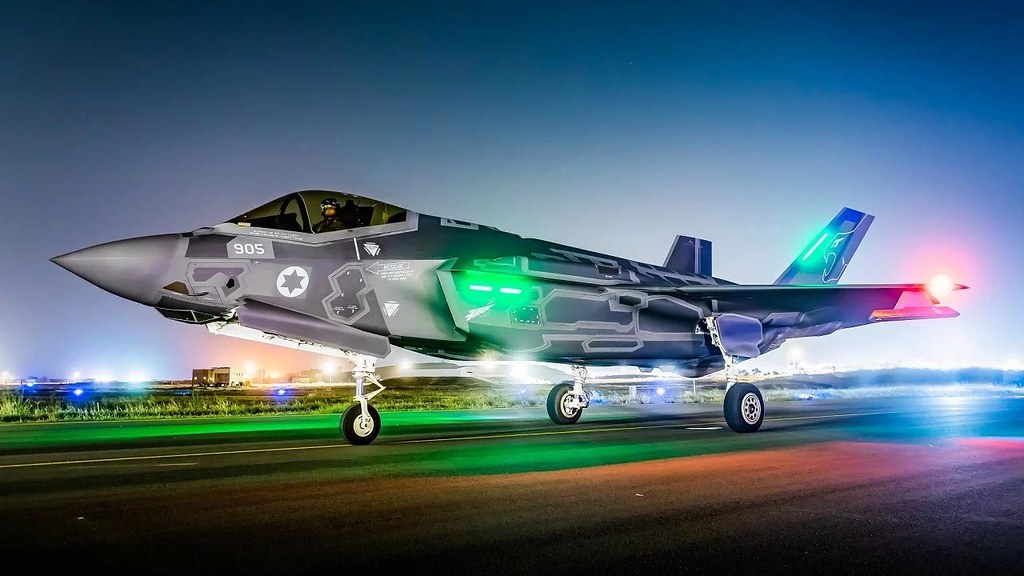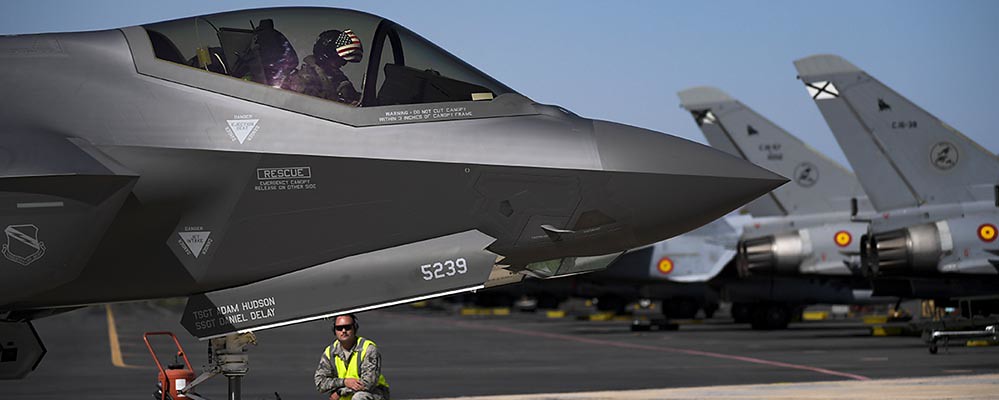Eurofighter vs F-35: the opinions of professional pilots on these advanced fighters
The F-35 fifth-generation fighter is becoming the plane of the moment in the West, with more and more countries deciding to acquire it.
The stealthy character of the F-35 and its advanced avionics seem to have left behind other very advanced fighters that have been manufactured in recent years, the so-called 4.5th generation of fighters, made up of excellent aircraft such as the Dassault Rafale, the Saab JAS-39 Gripen, the Eurofighter Typhoon and even the F/A-18E/F Super Hornet. These are fighters that are not stealthy, but do have some stealth capabilities, of course not comparable to those of the F-35.

The success of the F-35 among the countries that manufacture the Eurofighter
One of the most bitter rivalries between the planes of that generation 4.5 and the most popular plane of the 5th generation is the one that pits the Eurofighter against the F-35. The American stealth fighter has ended up obtaining contracts between 3 of the 4 Eurofighter manufacturing countries: United Kingdom (48 F-35B), Italy (75 F-35A and B) and Germany (35 F-35A ). The only country in the Eurofighter consortium that has not yet opted for the F-35 is Spain, which has decided to buy more Eurofighters to replace their already veteran EF-18s< /a>.
In 2017, the F-35 program published a report (later deleted) stating that in a Red Flag exercise held in In the USA, the participating F-35s obtained a victory average of 20 to 1, that is, for every 20 enemy fighters shot down by the F-35s, the enemies only managed to shoot down one F-35.

The debate among test pilots about the advantages of the F-35
In February 2013, Billy Flynn, test pilot for Lockheed (the company that makes the F-35), stated to Flight Global that all three versions of the F-35 will have better or equal kinematic performance than any combat-configured fourth-generation fighter, a comparison that included transonic acceleration performance vs. an air-to-air configured Eurofighter Typhoon and high angle-of-attack flight performance vs. the Boeing F/A-18E/F Super Hornet: "The F-35 is comparable or better in every one of those metrics, sometimes by a significant margin, in both air-to-air, and when we hog-up those fourth-generation fighters, for the air-to-ground mission."
In that same story, Flight Global noted the objections of a Super Hornet test pilot: "These claims are technically inaccurate from my point of view as a professional test pilot," he said. "An aircraft with small control surfaces intended for stealth cannot produce such fantastical results in maneuverability; a little wing cannot produce a lot of lift period."

A problem with the F-35 that the Eurofighter does not have
Flynn himself acknowledged that "the F-35 can go out on any given day, and we have, gone to the red line of the airplane", including a full load of weapons in the internal holds. of the plane, which is the ideal configuration of this fighter so as not to diminish its stealth capacity (which is what happens if the F-35 carries its weapons in supports under the wings). Flynn added that going to the limit of the aircraft envelope with a full weapons load is "inconceivable in any of the other fourth-generation airplanes, including Typhoon, which most would say has the best performance of those four fourth-gen jets." In addition to flying the F-35s, Flynn was also a test pilot on the Eurofighter and F-16.
The maneuverability of the F-35 is very good. In that article, Flight Global noted: "All variants of the F-35 are capable of flying at Mach 1.6 and 50° angle-of-attack." In addition, the F-35A (USAF version) and F-35C (US Navy version) "have a maximum speed of 700 knots calibrated airspeed (KCAS-1296 km/h) while the F-35B can fly at 630 KCAS (1167 Km/h). The A, B and C variant are rated at 9g, 7g and 7.5g's respectively."

The Achilles heel of the F-35: the weapons load capacity
The problem comes when it comes to assessing the F-35 and its 4.5th generation rivals if they are given the same combat load: "An F-35 loaded up with two 2000lbs bombs and two air-to-air missiles internally is not carrying an equivalent payload to a Eurofighter Typhoon with four 2000lbs bombs and five air-to-air missiles or a Super Hornet armed with a mix of bombs and air-to-air missiles", Flight Global noted.
The key to the success of the F-35 is, of course, not in its weapons load capacity, but in its stealth. As a stealth aircraft, the F-35 can carry out an attack mission without being detected. This is a notable advantage over 4.5th generation aircraft, including the Eurofighter. The same goes for air combat: by the time we got to a dog fight, any opponent of the F-35 would have taken longer to spot this fighter than the F-35. it would have taken time to locate and shoot down its enemy via air-to-air missiles. That is the advantage of the F-35 that has made many countries lean towards it.

The opinion of a former pilot of the Italian Air Force
David Cenciotti, a former Italian Air Force pilot and author of the excellent blog The Aviationist, noted in 2013: "No doubt the F-35 will be, when available, a very capable aircraft: its stealth design, extended range, internal carriage of stores and a variety of integrated sensors are definitely the ingredients for success in modern air-to-ground operations."
However, Cenciotti added: "when time comes for air dominance, some other ingredients like thrust to weight ratio and wing loading tend to regulate the sky. And in that nothing comes close to a Typhoon, except an F-22 which has very similar values. The F-35 thrust to weight ratio is way lower and its energy-maneuverability diagrams match those of the F/A-18, which is an excellent result for a single engine aircraft loaded with several thousand pounds of fuel and significant armament."
---
Main photo: U.S. navy. A United States Air Force F-35A at Los Llanos Air Base, in Albacete, Spain, on June 10, 2019, on the occasion of its participation in the Tactical Leadership Program (TLP).
|
Don't miss the news and content that interest you. Receive the free daily newsletter in your email: |
- Most read
- The 'hole' without civil flights around Paris during the opening of the Olympic Games
- Stunning footage of the F-15QA Ababil in flight recorded from its cockpit
- The firearms used by the Pontifical Swiss Guard, the smallest army in the world
- The most distant deployment of the Spanish Air Force in Australia and New Zealand
- Eurofighter vs F-35: the opinions of professional pilots on these advanced fighters
- The first photo of an F-16 fighter with Ukrainian insignia and the details it has revealed
- This is the driver station of an M1 Abrams tank and the impressive start of its engine

 ES
ES







Opina sobre esta entrada: